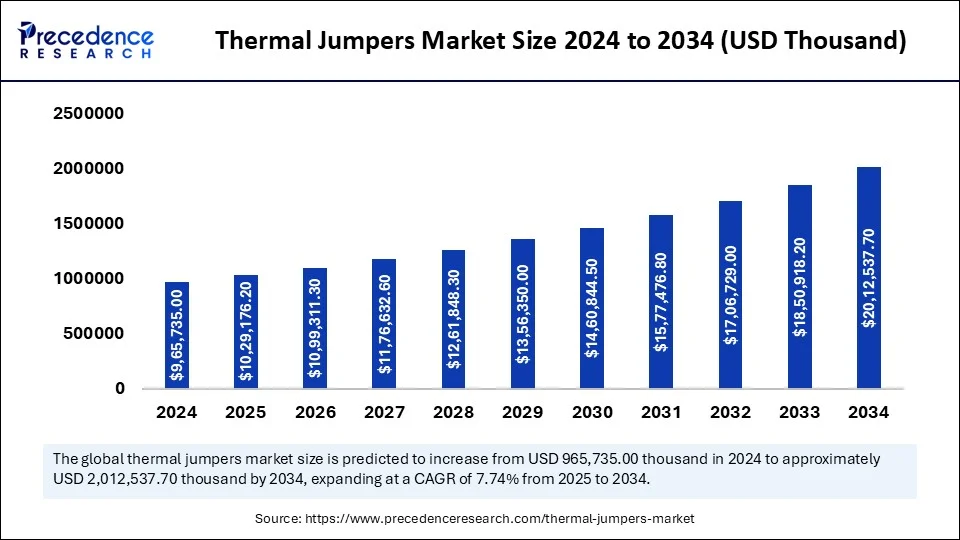
Thermal Jumpers Market Key Takeaways
- Asia Pacific led the thermal jumpers market with the largest share of 37% in 2024.
- North America is expected to grow at a notable CAGR of 7.65% during the forecast period.
- By material, the aluminum nitride (AlN) segment held the major market share of 42% in 2024.
- By material, the silicon nitride (Si₃N₄) segment is poised for significant CAGR of 9.04% over the forecast period.
- By mounting style, the surface-mount thermal jumpers (SMD) segment generated the biggest market share of 56% in 2024.
- By mounting style, the embedded thermal jumpers segment is expected to grow at a notable CAGR of 8.55% during the forecast period.
- By thermal conductivity, the high-thermal conductivity jumpers segment held the major market share of 51% in 2024.
- By thermal conductivity, the ultra-high thermal conductivity jumpers (>200 W/m·K) segment is expanding at a solid CAGR of 8.55% during the forecast period.
- By application, the power electronics segment dominated the market with the highest share of 38.18% in 2024.
- By application, the automotive electronics segment is poised to expand at a CAGR of 9.11% in the forecast period.
Market Overview
The thermal jumpers market is witnessing robust growth due to the increasing demand for efficient thermal management solutions in electronic and electrical systems. Thermal jumpers, also known as thermal conductive materials, are essential components used to transfer heat from one component to another, enhancing the longevity and performance of electronic devices. As technological advancements push the boundaries of miniaturization and high-performance electronics, thermal jumpers have become indispensable in maintaining temperature balance across circuits. The global market is expanding rapidly, particularly in sectors such as consumer electronics, automotive, telecommunications, and industrial automation. Market players are investing in research and development to create thermal jumpers with higher conductivity, improved durability, and better compatibility with compact designs, fueling further growth.
Drivers
One of the primary drivers of the thermal jumpers market is the increasing trend of miniaturization in electronics and the associated challenges in heat dissipation. As devices become smaller and more powerful, the need for efficient thermal management solutions grows. Additionally, the proliferation of smart devices, electric vehicles, and 5G technology demands high-performance components that can manage heat effectively. The push for energy efficiency and system reliability in industrial applications also contributes to the growing demand. Moreover, the rising global temperature and regulatory pressure for sustainable electronics have driven manufacturers to seek advanced thermal management products like thermal jumpers to optimize performance without compromising design constraints.
Opportunities
The thermal jumpers market presents vast opportunities through technological innovation and emerging applications. Developments in nanomaterials, such as graphene and carbon nanotubes, offer the potential to create thermal jumpers with exceptional conductivity and low-profile designs. These innovations are likely to open up new avenues in high-density electronics, aerospace applications, and next-generation communication devices. Additionally, emerging economies in Asia-Pacific and Latin America are undergoing rapid industrialization and digitization, creating new markets for thermal jumper solutions. The integration of AI and IoT technologies into consumer and industrial electronics also necessitates advanced thermal regulation, presenting long-term opportunities for market expansion.
Challenges
Despite strong growth prospects, the thermal jumpers market faces significant challenges. One of the major hurdles is material compatibility, particularly when integrating jumpers into complex and varied electronic systems. Ensuring seamless integration without affecting the performance or durability of the overall system remains a technical challenge. Furthermore, the high cost of advanced thermal jumper materials can act as a barrier, especially for small- and medium-scale manufacturers. Supply chain disruptions and fluctuating raw material prices also add to the cost-related concerns. Additionally, the lack of standardized testing protocols for thermal jumpers across regions can complicate product development and international trade.
Regional Insights
Regionally, Asia-Pacific dominates the thermal jumpers market due to its massive electronics manufacturing base in countries like China, Japan, South Korea, and Taiwan. The region’s strong presence in consumer electronics, semiconductors, and automotive industries makes it a central hub for thermal management products. North America follows closely, driven by technological advancements and significant investments in electric vehicles and data centers. Europe, too, is a notable player, with a focus on sustainable electronics and innovations in automotive and industrial automation. Meanwhile, Latin America and the Middle East & Africa are emerging markets, gradually increasing their adoption of high-performance electronic systems, contributing to the growing regional demand.
Recent Developments
The thermal jumpers market has seen several notable developments in recent years. Leading manufacturers have focused on mergers and acquisitions to expand their technological capabilities and market reach. Significant investments in R&D have led to the introduction of thermal jumpers with enhanced conductivity, flexibility, and environmental resistance. Some companies have unveiled next-gen thermal jumper solutions tailored for 5G infrastructure and high-speed data applications. Collaborations between academic institutions and industry players have also advanced innovation, resulting in cost-effective and high-efficiency materials. These developments reflect the dynamic nature of the market and the competitive landscape that continues to evolve rapidly.
Thermal Jumpers Market Companies
- Vishay Intertechnology
- TT Electronics
- Electrotechnik
- Lotus Microsystems ApS
- Stackpole Electronics, Inc. (SEI)
- WDI AG
- Delta
- 3M
- Amphenol Industrial Products Group
- Charles Industries, LLC
- Akahane Electronics Corporation
- FINECS CO. LTD.
- NIDEC COPAL ELECTRONICS
Segments Covered in the Report
By Material Type
- Aluminum Nitride (AlN)
- Beryllium Oxide (BeO)
- Silicon Nitride (Si₃N₄)
- Ceramic-based
- Others (Metal-based, etc.)
By Mounting Style
- Surface-Mount Thermal Jumpers (SMD)
- Through-Hole Thermal Jumpers
- Embedded Thermal Jumpers
By Thermal Conductivity
- Standard Thermal Jumpers (1-5 W/m·K)
- High-thermal conductivity Jumpers (5-200 W/m·K)
- Ultra-High Thermal Conductivity Jumpers (>200 W/m·K)
By Application
- Power Electronics
- LED Lighting Systems
- RF & Microwave Components
- Automotive Electronics
- 5G & Telecom Infrastructure
- Others (Medical Devices, etc.)
By Geography
- North America
- Europe
- Asia Pacific
- Latin America
- Middle East and Africa
